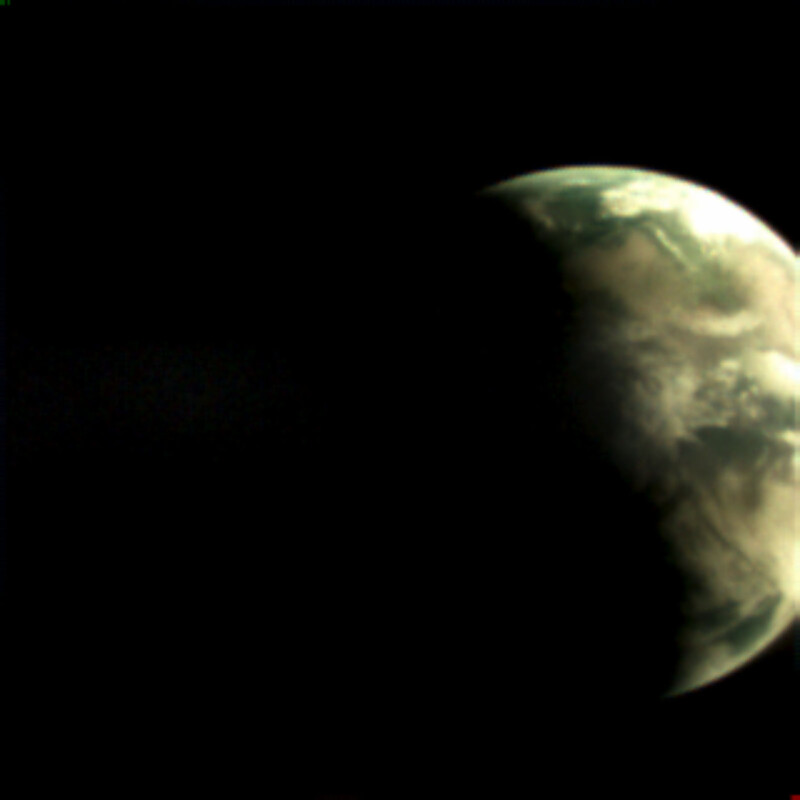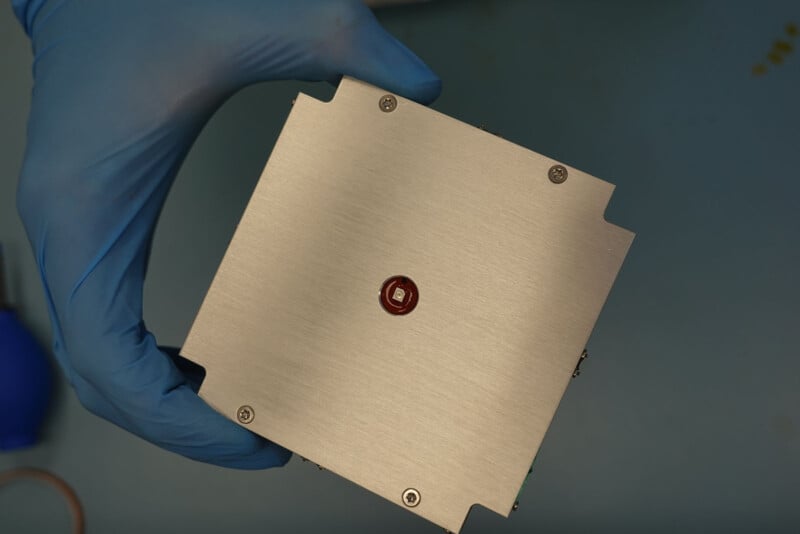
A new image of Earth may not look like much at first glance, but how it was captured is incredible.
The portrait of Earth was shot from an altitude of around 3,730 miles (about 6,000 kilometers) using an “extremely miniaturized camera” that is about the same size as the edge of a 20-cent Euro coin, which is 0.08 inches (2.14 millimeters) thick.
The tiny camera (technically, the team sent a pair of cameras into space) was aboard the European Space Agency’s (ESA) “shoebox-sized” TRISAT-R CubeSat. The cameras feature lenses made from clear borosilicate glass, which promises some radiation resistance. The lenses are mounted directly onto the image sensor, which is just 320 x 320 pixels.
“This tiny camera measuring less than two cubic millimeters in size took a picture of an object measuring approximately one trillion cubic kilometers — our beautiful planet Earth — from thousands of kilometers away,” explains TRISAT-R project manager Iztok Kramberger from the University of Maribor in Slovenia.

“A CubeSat made from three standardized 10-cm boxes, TRISAT-R is Slovenia’s second space mission, which flew on Europe’s inaugural Vega-C launch last year to the relatively inhospitable environment of medium-Earth orbit, at 6,000 km up. The mission’s orbital path takes it right through the heart of the ionosphere — an electrically active layer of Earth’s atmosphere — as well as the inner Van Allen radiation belt,” says an ESA news release.
“The resulting picture of Earth is very low resolution as these highly miniaturized cameras were not intended to perform terrestrial imaging, plus TRISAT-R satellite employs magnetorquers for its attitude control, so that precision pointing is difficult to achieve,” Kramberger explains.
The team’s primary goal is to capture examples of the “Black Sun effect,” a common issue with digital imaging on Earth. It is when pixels become too saturated, causing extremely bright areas to instead appear dark. “We have succeeded in these investigations, but have also been lucky enough to acquire images like these,” the scientist adds.
It is worth noting that the “Black Sun effect” is also seen with images from the James Webb Space Telescope, as image processors must replace the black central region of bright stars with white pixels.
